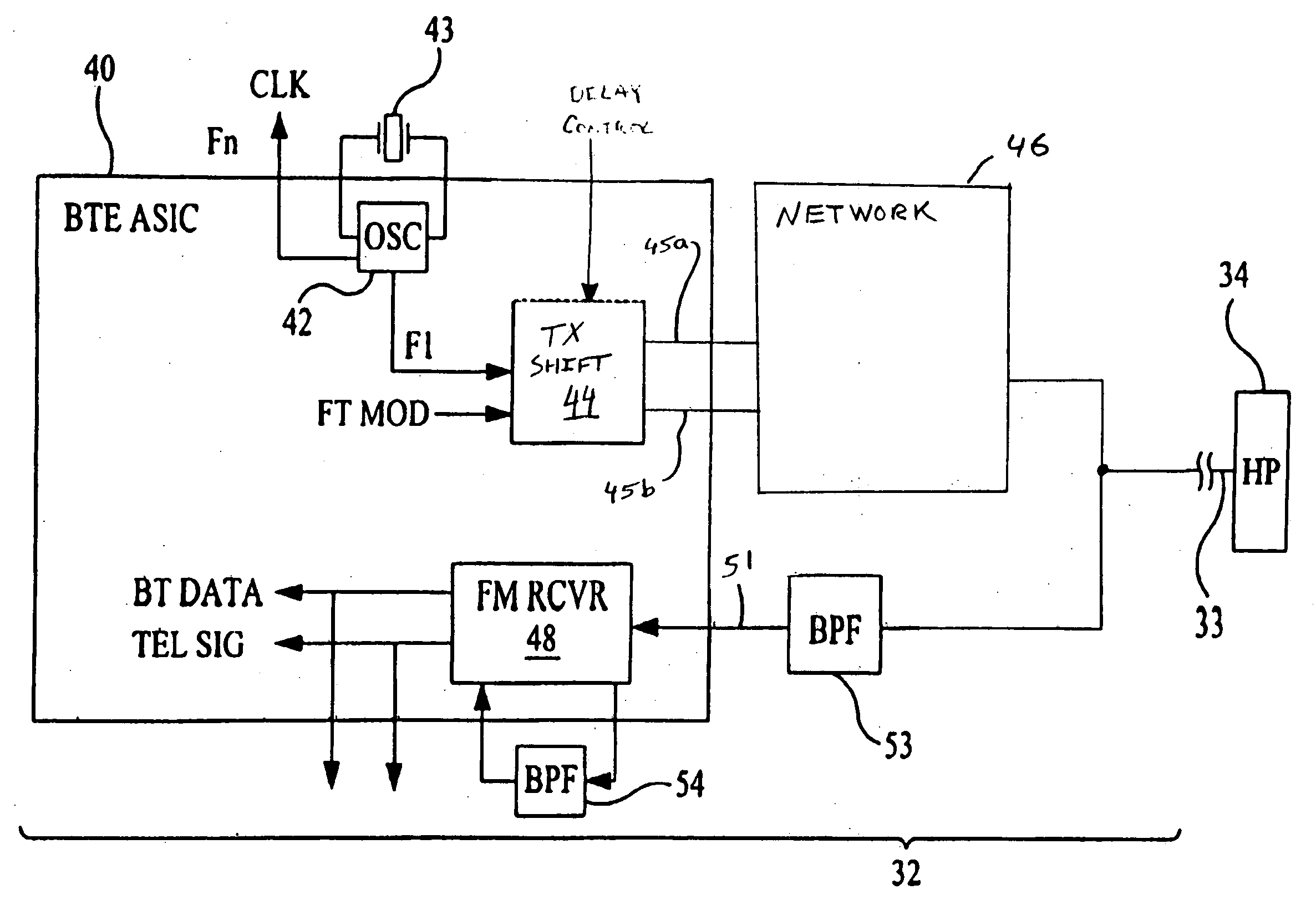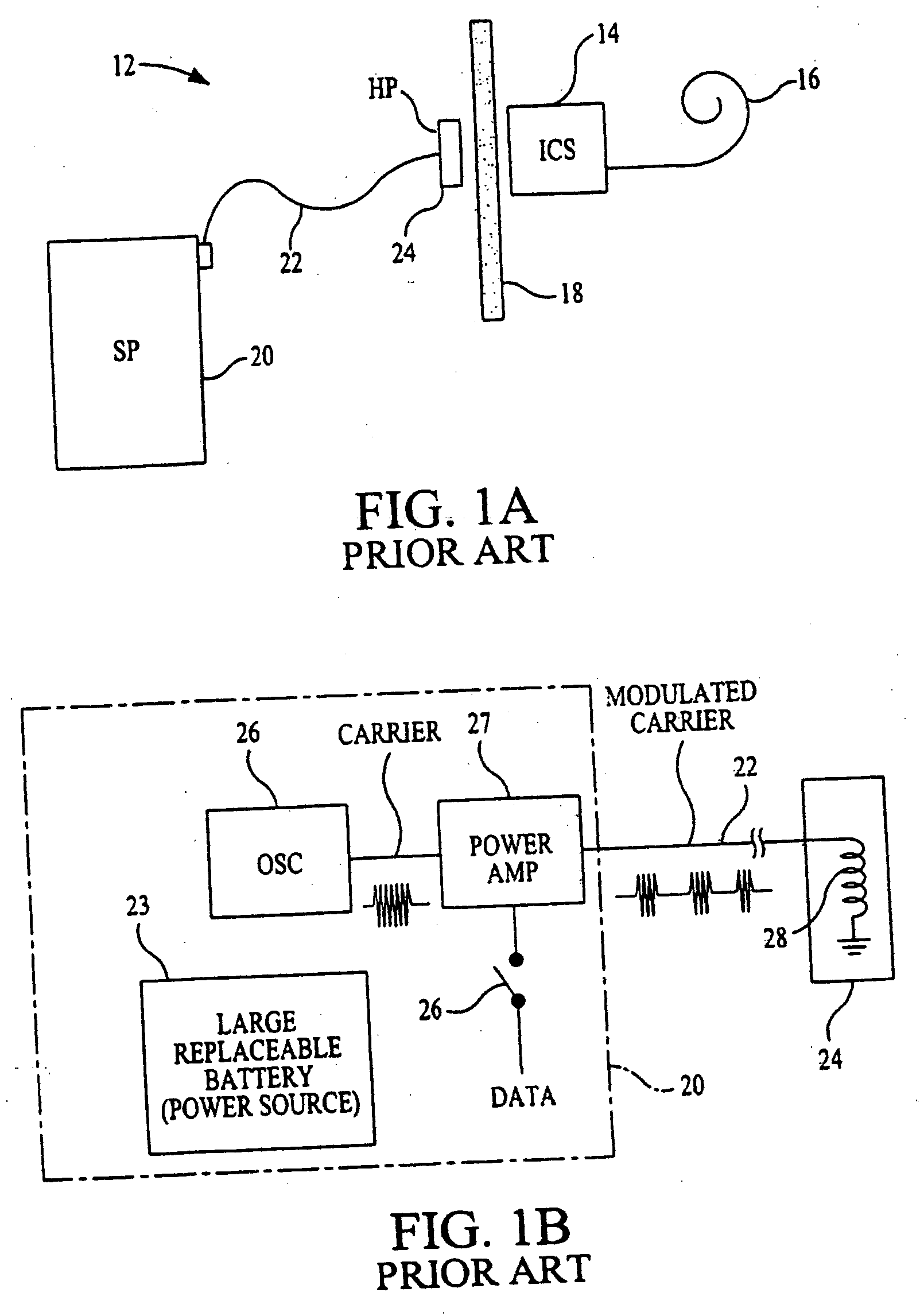Integrated phase-shift power control transmitter for use with implantable device and method for use of the same
- Summary
- Abstract
- Description
- Claims
- Application Information
AI Technical Summary
Benefits of technology
Problems solved by technology
Method used
Image
Examples
Embodiment Construction
[0031]FIG. 1A shows a representative block diagram of an ICS system 12 of the type commonly found in the prior art. A thorough description of a cochlear stimulation system of the type shown in FIG. 1A may be found, for example, in U.S. Pat. No. 5,776,172, which is incorporated herein by reference in its entirety. As seen in FIG. 1A, the ICS system 12 includes an implanted portion, including an ICS 14 and an electrode array 16, and an external portion, comprising a speech processor (SP) 20 connected to a headpiece 24 via a long cable 22. The implanted portion is separated from the external portion by a barrier such as, for example, a layer of skin 18.
[0032] In operation, the prior art ICS system 12 of FIG. 1A transmits power and data through the skin barrier 18 to the implantable portion using a technique as illustrated generally in the functional block diagram of FIG. 1B. The ICS system 12 uses the received data and power to provide stimulation pulses to select electrode pairs loca...
PUM
 Login to View More
Login to View More Abstract
Description
Claims
Application Information
 Login to View More
Login to View More - R&D
- Intellectual Property
- Life Sciences
- Materials
- Tech Scout
- Unparalleled Data Quality
- Higher Quality Content
- 60% Fewer Hallucinations
Browse by: Latest US Patents, China's latest patents, Technical Efficacy Thesaurus, Application Domain, Technology Topic, Popular Technical Reports.
© 2025 PatSnap. All rights reserved.Legal|Privacy policy|Modern Slavery Act Transparency Statement|Sitemap|About US| Contact US: help@patsnap.com



